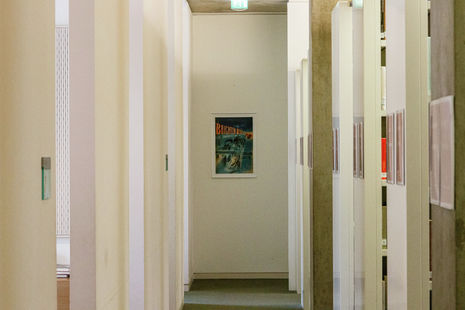The University of Cambridge must renounce the use of the term ‘ASNAC’
Jack Durand explains why continuing to use the term ‘Anglo-Saxon’ is racist, and urges the University to rename the ASNAC department.

The University’s continued use of the term ‘Anglo-Saxon’ is not only broadly ahistorical but also a tacit endorsement of the cultural baggage of institutionalised racism and white supremacy with which it has always been associated, both within and outside the academy.
On 19th November 2019, the International Society of Anglo-Saxonists (ISAS), the discipline’s most prominent academic organisation, voted narrowly to change its name to the International Society for the Study of Early Medieval England (ISSEME). In a statement issued two months prior, ISSEME wrote:
’It has long been recognised that the term ‘Anglo-Saxonist’ is problematic. It has sometimes been used outside the field to describe those holding repugnant and racist views, and has contributed to a lack of diversity among those working on early medieval England and its intellectual and literary culture.’
This is a charitable summary of the term’s connotations. The term has not ‘sometimes’ been misused in the proselytizing ideology of white nationalism – its very origins are entrenched in these beliefs. Historically, the people of early medieval England did not generally refer to themselves as ‘Anglo-Saxon’, abandoning the term after a period of infrequent use during the eighth and ninth centuries. Self-identification as ‘Englisc’ or ‘Anglecynn’ was the norm.
“Misuse of medieval history is neither new nor an idiosyncrasy of so-called ‘Anglo-Saxon’ studies.”
Rather, the mainstream use of ‘Anglo-Saxon’ began in the 18th and 19th century based on a nationalising agenda linking those who chose to identify as such with an entirely imagined past of racial and ethnic homogeneity. Unfortunately, this was a narrative in which medieval historians were intimately involved.
Although disavowed now by professional historians, whiteness and self-identification as ‘Anglo-Saxon’ have come to be tied inextricably to implicit superiority and freedom in just this way. As, amongst many others, Dr Erik Wade and Dr Mary Rambaran-Olm have noted, the term has been used over the past 200 years to justify atrocious violence in the name of patriotism, imperialism and racial superiority.
Misuse of medieval history is neither new nor an idiosyncrasy of so-called ‘Anglo-Saxon’ studies. From the invocation of the 8th-century French duke, Charles Martel, by the Christchurch shooter last year to the appropriation of the Black Eagle of the Holy Roman Empire in Charlottesville, the attraction to far-right identitarian groups of this imaginary, Edenic past is obvious. The historicity of these claims is negligible and relatively unimportant: the original bearer of the Black Eagle standard was one Saint Maurice who, much to the dismay of his former fans, happens to have been a person of colour. Rather, the term ‘Anglo-Saxon’ has to come to represent in the Euro-American cultural imagination a unifying system of whiteness, legitimated by its continued use in a respectable academic context.
The term does not carry the same connotations within the modern academy, acting simply as a synonym for ‘early medieval England’. However, it is not sufficient to privately reject these abuses of history. Cambridge remains one of the most influential institutions in the discipline, educating and employing some of its most prominent academics from Simon Keynes, emeritus professor and fellow of Trinity College, to Rory Naismith, a global authority on early medieval monetary and economic history. A refusal on the part of the ASNAC department to follow the ISSEME in renouncing the term ‘Anglo-Saxon’ would constitute a refusal to take an anti-racist stance on an issue so central to their field of study.
These associations carried by the term may also be harming access in a discipline that could benefit greatly from new and refreshing perspectives. A 2018 report from the Royal Historical Society found that history broadly is failing to achieve equitable representation, with only 11% of undergraduates, 8.6% of postgraduates and less than 1% of university academic staff coming from BME backgrounds. The study of the early medieval period lags behind even these paltry standards. Mary Rambaran-Olm, one of the few women of colour in the field, resigned her second vice-presidency of ISSEME (then ISAS) last year, decrying discrimination and elitism, stating that there was no way we were going to be able to ’fix the multitude of problems in the field’. She has spoken at length about the gate-keeping she has encountered, including receiving a job rejection because of the department’s struggle to ‘justify that [she] was an Anglo-Saxonist’.
Just as women’s or African American studies courses inevitably attract students from corresponding backgrounds, so too will the study of Anglo-Saxon, Norse and Celtic. However, while the former seeks to recover the institutionally suppressed voices of their respective communities, the latter perpetuates an image of early medieval studies as a field of racial and ethnic exclusivity.
Possibly the ASNAC department should not exist at all, arguably, alongside the AMES department, privileging the study of certain cultures and societies over others. However, assuming the department is to continue in its current form, it should at least do so, symbolically, under a different name.
 News / Cambridge academics stand out in King’s 2026 Honours List2 January 2026
News / Cambridge academics stand out in King’s 2026 Honours List2 January 2026 Interviews / You don’t need to peak at Cambridge, says Robin Harding31 December 2025
Interviews / You don’t need to peak at Cambridge, says Robin Harding31 December 2025 News / AstraZeneca sues for £32 million over faulty construction at Cambridge Campus31 December 2025
News / AstraZeneca sues for £32 million over faulty construction at Cambridge Campus31 December 2025 News / News in Brief: Maypole mentions, makeovers, and moving exhibits4 January 2026
News / News in Brief: Maypole mentions, makeovers, and moving exhibits4 January 2026 Features / “It’s a momentary expression of rage”: reforming democracy from Cambridge4 January 2026
Features / “It’s a momentary expression of rage”: reforming democracy from Cambridge4 January 2026










